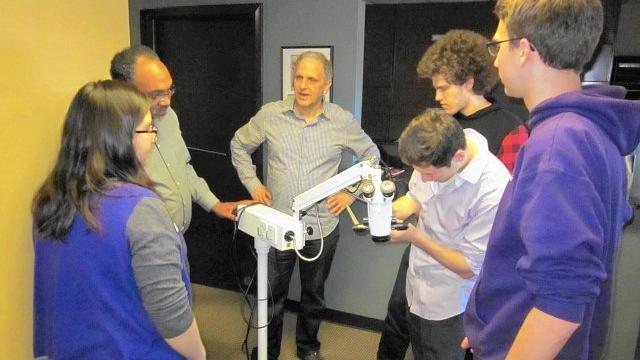
by Brian L. Cox
Pioneer Press
June 20, 2016
If long lines at airport security checkpoints are a headache for travelers imagine trying to get past TSA agents while carrying a 70-pound operating microscope.
Skokie ophthalmologist, Dr. Stuart Sondheimer, runs into that problem every time he travels to do pro bono cataract surgery on people who would not typically be able to afford it. He said his work as a volunteer eye surgeon with an organization called SEE International has taken him to many developing nations including Vietnam, El Salvador and Honduras.
According to its website, Santa Barbara-based SEE International “provides sustainable medical, surgical, and educational services through volunteer ophthalmic surgeons with the objectives of restoring sight and preventing blindness to disadvantaged individuals worldwide.”
But Sondheimer said volunteering to help give people sight can be heavy work in more ways than one. He said the bulk and weight of some of the medical equipment he needs to do the surgery is a constant problem when traveling.
In order to tackle that predicament the Skokie eye surgeon teamed up with freshman engineering students at Northwestern University recently and they came up with solutions to help lighten the load of his charity work.
In March three teams of four engineering students were assigned as part of their coursework the task of reducing the weight of the microscope and the bulky cases it is transported in, said Northwestern University professor, Dr. Richard Freeman, adding that the challenge was part of a class called “Design, thinking and communications.”
“It’s a learning experience but it’s also an opportunity for them to stretch their engineering skills,” said Freeman.
On June 7 Sondheimer met with the students and was able to see what they had come up with.
“I thought the students came up with some really good ideas,” he said.
The operating microscope magnifies and illuminates, allowing eye surgeons to see inside the eye, Sondheimer explained.
“If you can see it then you can fix it,” he said. “That allows us to do good work even in very remote areas. We have to lug around a lot of equipment.”
The microscope and the cases they are packed in weigh more than 70 pounds, which Sondheimer said can make a routine trip to the airport cumbersome.
“We often bring in entire operating rooms,” he said. “In some airport you can’t bring in packages as heavy as the microscope.”
The students immediately dove into the project and after more than a month of hard work they were able to reduce the size and weight of the cases, switch out heavier parts of the microscope with lighter materials and also added a three gallon water balloon to counter the weight of the microscope’s “swing arm,” Freeman said.
“It’s always satisfying when the students are able to learn something,” he said. “It is great when they can learn a lot and have a success and delight their client.”
Sondheimer said that at first he was a bit skeptical because his medical equipment suppliers had told that they had reduced the weight of his equipment by as much as possible.
“They were wrong,” he said. “It could be done better and these kids came up with some good solutions.”
Freeman said his students findings have been sent to, SEE International, and that he is also sending them the parts from the prototypes his students made.
“SEE International will go back to their equipment partners and have them look over what the students did and see if it’s something they can manufacture,” he said. “I can’t tell you how pleased I am with the work they did. This was a tough project.”
Brian L. Cox is a freelance reporter for Pioneer Press.
Copyright © 2017, Chicago Tribune
This article is related to: Northwestern University

